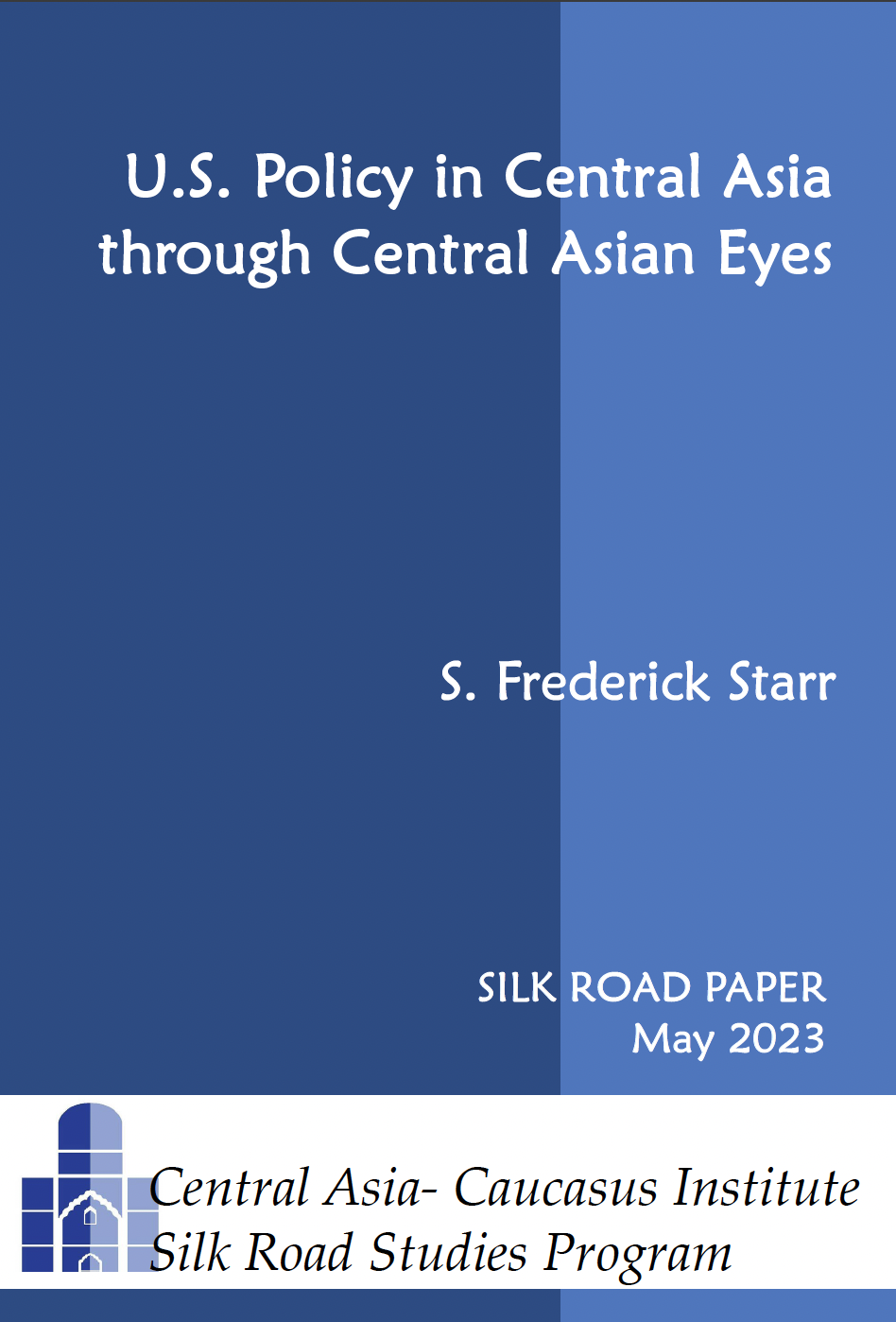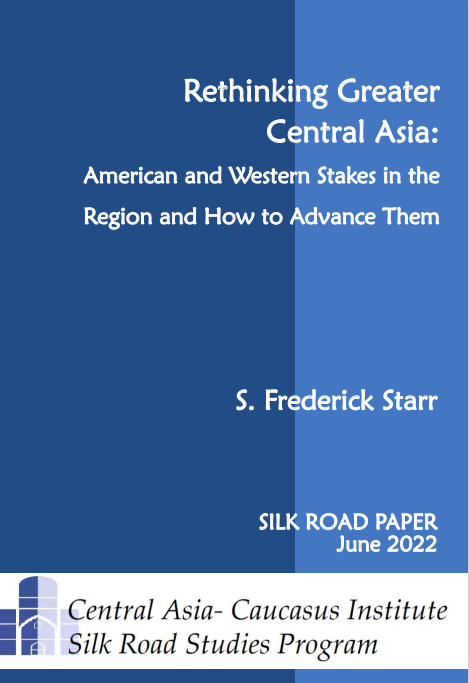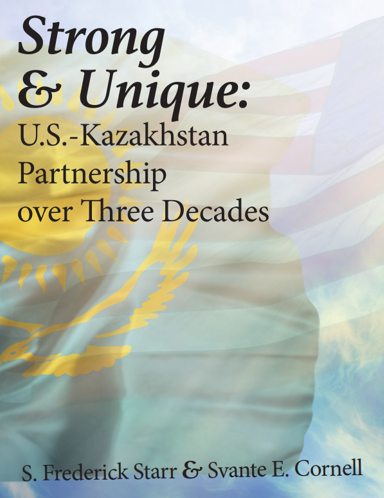BACKGROUND: Over the last two decades, a combination of multiple factors has contributed to the large-scale development of energy infrastructure in the Caspian region. Geopolitical realities favored the westward orientation of oil and gas pipelines from the landlocked region, while U.S. sanctions against Iran excluded Iran from the list of potential export routes for Caspian energy resources. The multiple obstacles created by the Russian state-owned energy monopolies, Transneft and Gazprom, prevented the easy transportation of energy resources to Western consumers, and made the Russian option unattractive. In addition, there was a clear desire of the U.S. and Europe to help the newly independent states of the former Soviet Union to build their own sovereign economies. As a result, under President Clinton, the U.S. initiated what has been called a Multiple Pipeline Strategy that envisioned the development of multiple new commercial pipelines crossing several countries, including Russia, but preventing any country from obtaining a stranglehold on the Caspian.
The close collaboration of the U.S., Turkey, Azerbaijan, Georgia, and Kazakhstan in the process of implementation of that strategy played a crucial role in building a strong economic structure between the Caspian resources and Black Sea and Mediterranean seaports. The construction of major oil and natural gas pipelines between Azerbaijan, Georgia, and Turkey solidified the region’s dramatic break from Russian energy dominance and political leverage. In this, the breakthrough was the construction of the Baku-Tbilisi-Ceyhan oil pipeline, completed in 2005.
The backbone project for the Caspian natural gas connection to Europe is the second phase of development of the fields under the Shah-Deniz Consortium, led by BP. The current production of the field is about 8 bcm of natural gas annually, which is exported by the Baku-Tbilisi-Erzurum pipeline (BTE), also called the South Caucasus Pipeline (SCP), to Georgia (2 bcm) and Turkey (close to 6 bcm). This pipeline and natural gas from the Shah-Deniz field has provided Georgia with a much needed alternative to Russian natural gas supplies and has helped Turkey diversify its supplies.
The second phase development at the Shah-Deniz field will produce an additional 16 bcm to supply Turkey, as well as several potential consumers in the European Union, thus facilitating Europe’s energy security and diversification of energy supply. As of today, the Shah Deniz field is considered the critical source for reliable additional supply of pipeline gas for Southeastern Europe that can reduce dependency on Russia. The second phase development envisages the construction of the Trans-Anatolian Pipeline (TANAP), which will take natural gas from the South Caucasus Pipeline at Erzurum and deliver it to Turkish-Greek borders, for further shipments through the Trans-Adriatic pipeline to Italy via Greece and Albania.
This complex project involves seven countries, multiple companies and consortiums and faces multiple technical, as well as financial and political challenges. After the Nabucco project failed, largely due to a lack of political will and commercial justification of the project, TANAP remains the only pipeline project that can connect Caspian gas resources to Europe, clearing the way for a future Trans-Caspian gas pipeline development for engagement of Turkmenistan with its vast resources.
IMPLICATIONS: One political challenge for the Shah-Deniz project is that the Shah-Deniz Consortium involves the Iranian State Oil Company as a shareholder, which holds a 10 percent stake in the project. In 2011-2012, the U.S. Congress debated the Iran Threat Reduction and Syria Human Rights Act, which targeted Iranian energy assets inside and outside of the country, something that could have damaged the prospects of the Shah-Deniz project’s development (see August 31, 2011 issue of the CACI Analyst). The U.S. Administration and the State Department took the lead in carving out an exemption for the Shah-Deniz project from Iran sanctions in spite of the Iranian minority share in the project. After deliberate consideration, the strategic interests of the development of the alternative sources of gas for Europe prevailed. The language of the bill passed by the House in 2011 and by the Senate in 2012 included exemption of sanctions for the Shah-Deniz Consortium. This bill was signed by President Obama and became law on August 10, 2012. Later, in January 2013, the president reaffirmed the sanctions exemption by signing the National Defense Authorization Act for Fiscal Year 2013. This exemption became the issue of unjustified political discussion in the U.S. in recent weeks.
Several news reports (appearing in the Washington Post, Christian Science Monitor, and The Hill) have ignored the international scope of the project, the rationale for an exemption to sanctions and the timing of those exemptions. Instead, questions have been raised whether a minority stakeholder in the project used its support of a 2013 conference to support their business interest in Shah-Deniz. By that time, of course, both Congress and the White House had long agreed that the Shah-Deniz project should continue unencumbered by sanctions. The suggestion of impropriety by members of Congress – that foreign corporate interests had the clout to impact legislation about U.S. national security – is not only at odds with reality in the case, but delegitimizes the sanctions regime and ignores the well-understood point that the Obama administration, not Congress, was the driving force behind the policy decision on exempting Shah-Deniz. Indeed, back in 2011, Ambassador Richard Morningstar, then the State Department's special envoy for Eurasian Energy and subsequently Ambassador to Azerbaijan, told NPR that "if in fact Shah Deniz were to be sanctioned, it would defeat many years of U.S. policy for gas to go from the Caucasus and Central Asia to Europe." Thus, this reporting diverts focus from the strategic interests to artificially invented political linkages.
The other major challenge for the development of the project is coming from competing projects originating in Russia and targeting the same markets in South and South Eastern Europe. Initially, the so-called South Stream Pipeline proposed to take natural gas from Russian territory across the Black Sea to Bulgaria and beyond to the Balkans and Central Europe. The sanctions imposed by the U.S. and EU on Russia amid Russia’s aggression in Ukraine forced Russia to cancel the project, but President Putin came up with a new initiative during his state visit to Turkey in December, 2014 (see May 14, 2015 issue of the CACI Analyst). This initiative is currently called “Turkish Stream” and proposes a new natural gas pipeline from Russia to Turkey across the Black Sea and beyond to markets that Shah-Deniz is supposed to serve.
Another challenge is the perception in the region that Europe, and perhaps the U.S. as well, no longer has the capacity and appetite to offer significant incentives to regional producers and partners due to the financial restrictions and lack of political will. In this view, Europe is increasingly viewed as exceedingly slow in decision making. After all, it is a fact that even highly prioritized EU projects like Nabucco, aimed at connecting Caspian natural gas resources to Europe, remain unimplemented, while China managed to build both oil and natural gas pipelines, thus allowing Central Asian states to diversify their markets – but also reducing the prospects for alternative developments via the Caspian Sea.
CONCLUSIONS: There is a need for a serious discussion on the strategic importance of the energy dimension of current American policy in Eurasia. The recent development of the Southern Corridor for Natural Gas is taking place in the context of weakening strategic engagement of the United States with the actors in the Black Sea-Caspian region, which have for over a decade been constructed around the energy and transportation infrastructure. The current commitment to soft power on the part of both the EU and the U.S. cannot match Moscow’s assertive political-military and energy policies in the region. The Shah Deniz project with its potential to supply European markets can boost relationships between the Caspian region and Europe, but events may take an opposite direction if the Consortium, its shareholders and contractors were targeted by sanctions.
The spurious debate on the development of the sanctions architecture is merely a distraction from the real issue: achieving the twin goals of the Southern Energy Corridor by reducing European dependence on Russian natural gas, and by expanding the freedom of maneuver of the energy-producing and transit states of Central Asia and the Caucasus. Renewed American engagement is important for the realization of these objectives. While the EU will naturally take the lead on day-to-day affairs, American strategic reassurance will be needed for the project to move forward; this is particularly the case as the future Trans-Caspian energy supplies are concerned.
AUTHOR’S BIO: Mamuka Tsereteli, Ph.D., is Research Director of the Central Asia-Caucasus Institute & Silk Road Studies Program, Joint Center, affiliated with the Johns Hopkins University’s School of Advanced International Studies and the Institute for Security and Development Policy.
Image Attribution: Wikimedia Commons & Scott Sutherland






 Book S. Frederick Starr and Svante E. Cornell,
Book S. Frederick Starr and Svante E. Cornell,